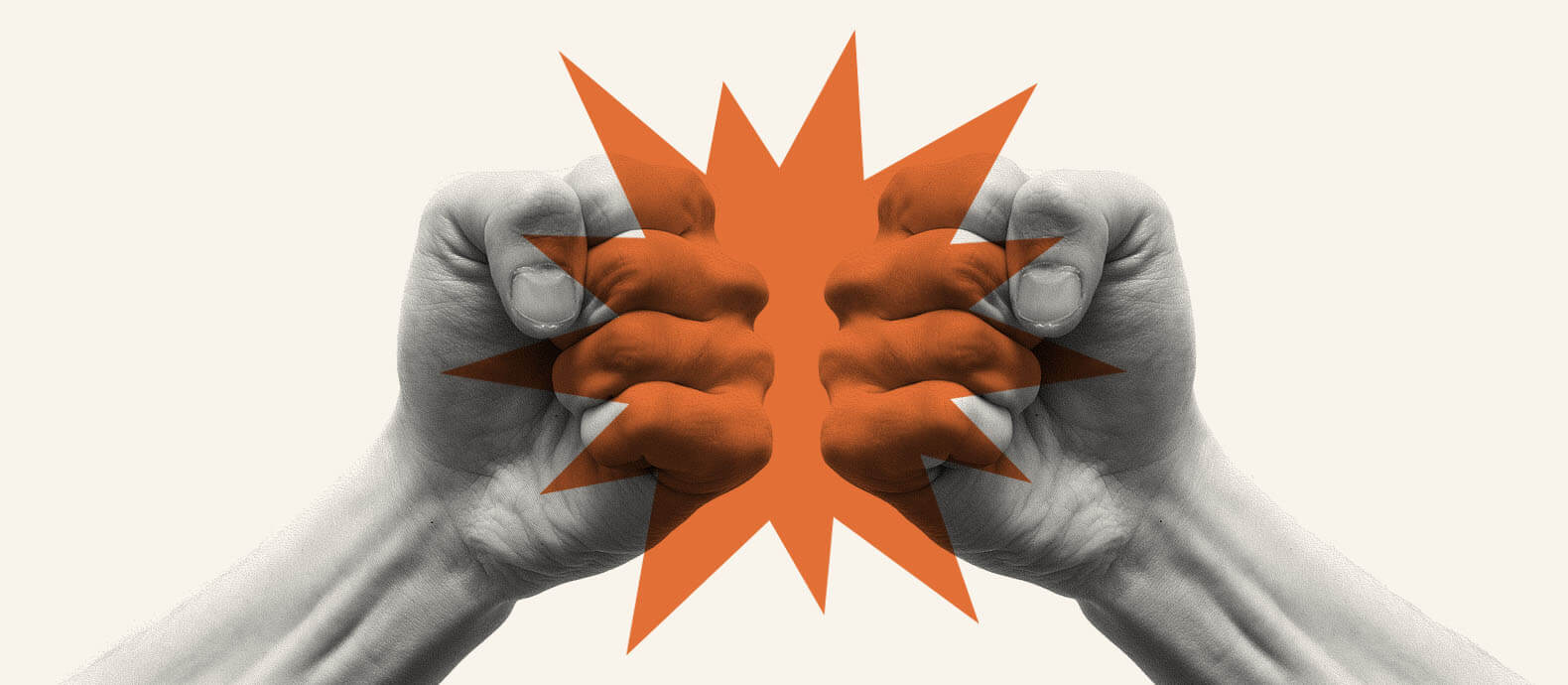
Table of Contents:
Last updated on: March 29, 2023
Protecting intellectual property (IP) assets is key to building a good brand protection strategy in 2023 and beyond. The increased reliance on digital technology creates a far greater risk of counterfeit products, infringements, and scams designed to tarnish your brand’s reputation.
Intellectual property disputes directly result from a disagreement between two or more parties over ownership of intellectual property assets, most commonly resulting in IP litigation. These legal battles are time consuming, often lasting for years, adding millions of dollars in attorney fees to brands.
In this blog, learn what an intellectual property dispute is, the different types of disputes that could arise, what to expect in case of a dispute, and more. Most importantly, learn how technology could play a pivotal role in your efforts to protect your brand.
Any unauthorized or illegal use, infringement, or breach of intellectual property rights by a third party could fall under the ambit of violation. This could include a range of intangible assets, including inventions, names, logos, phrases, and more.
The following can be an example of potential violations
In the hope of curbing infringement, it is essential to take action against third parties. An intellectual dispute can arise if someone is infringing your IP or if someone else accuses you of unauthorized use of their assets.
Another instance is when there is a disagreement over the ownership or validity of a particular intellectual property right. IP disputes are often complex and may involve issues such as infringement, licensing, royalties, and damages.
It could be resolved through various methods, including out of court settlements, arbitration, mediation, or litigation.
Did you know that Adidas forwarded a claim of intellectual property violation against luxury fashion brand Thom Browne for using ‘stripes’ in their design? Read more about the case and judgment here.
Let’s dive into various types of intellectual property disputes and their major differences.
A patent is an IP right given for technical inventions that give the owner the right to exclusively own it and prevent others from using it. Most commonly, patent disputes arise on infringements, validity, and ownership issues.
In the majority of cases, a third party is infringing by making/selling the patented invention or indirectly using a confusingly similar version of the patented product.
Validity is another common issue that arises in patent disputes. To be granted a patent, novelty, non-obviousness, and utility needs to be proved. If it can be proved that a similar or the same invention exists anywhere worldwide, the patent is invalid.
Subsequently, disputes can arise when there is a disagreement over who owns the rights to a particular patent, particularly where multiple investors or founders are present.
On 1 July 2021, Nokia filed a lawsuit at the UK High Court accusing Oppo (mobile phone manufacturer) of infringing its patents after their license expired for 4g and 5g with them.

If a third party is using a logo, name, phrase, or anything that falls under the ambit of trademarks without consent or license from the original owner, they can potentially be held accountable for trademark infringement.
A dispute arises where the trademark is identical or similar to a brand which might cause confusion amongst customers as to the origin of the goods or service. For example, two brands working in the same industry with a similar logo or name.
It could also be initiated to protect your trademarks from weakening the distinctive quality or reputation resulting from unauthorized use, regardless of the likelihood of confusion. Dilution can occur in two forms: “blurring” and “tarnishment.”
Hermès won a legal battle against an artist who created NFT art of the popular handbag designs and launched ‘meta birkins’ for trading. Hermes received 133,000 USD in damages since their trademark was infringed.
Copyright disputes are initiated to prevent the infringers from using the copyrighted materials without authorization and to seek compensation for any damages incurred. This could be a result of third party copying, distributing, displaying, or performing a copyrighted work.
A lot of disputes are rebutted for the ‘fair use’ policy. This allows using copyrighted material without prior approval for criticism, commentary, news reporting, teaching, scholarship, or research.
Lastly, litigation can arise in ownership disputes where multiple people collaborate on a work, an independent contractor is hired for work-for-hire, or when a work is transferred from one party to another.
Copyright cases are common in music industries, where tunes and lyrics are often used without authorization.
When an employee, founder, or another company misappropriates confidential information about a particular brand, trade secret disputes can arise. These secrets can be stolen, received by a third party by an employee, or used for another brand’s benefit or personal benefit.
Preventive measures are taken by brands, including signing a non-disclosure agreement (NDA) with employees and gatekeeping confidential information. Despite these in place, confidentiality is breached.
Tesla filed a lawsuit in July 2020 claiming that Rivian had stolen trade secrets by recruiting former Tesla employees and directing them to divulge particular sensitive and confidential information.
Intellectual property lawsuits are costly; the average cost for litigation processes is between 2.3 million to 4 million USD in the US.
Are they worth pursuing?
US courts awarded a whopping $4.67 billion in damages throughout 2020 in patent litigation cases alone. Imagine the total damages for all intellectual property litigation worldwide.
After detecting possible IP violations, file a formal complaint with the appropriate court in the jurisdiction you are based in. Include all relevant information, such as evidence of misappropriation, and request relief from the court in the form of damages or an injunction.
Before trial, both parties are in the discovery process, gathering evidence and information related to the dispute, including requests for documents and deposition.
Either party can request additional evidence, appeal to dismiss the lawsuit or limit the evidence in the trial.
If the case goes to trial, both parties present their narrative and the court decides the outcome.
If either party feels the case has been wrongfully decided, an appeal can be filed to take the lawsuit to a higher court.
Is litigation the only way? Well, No.
Alternative dispute resolution (ADR) methods, including arbitration and meditation, can be a quicker, less costly alternative to resolve disputes. However, they may not be appropriate for all IP disputes, particularly those involving complex legal or technical issues.
If you’re looking to leverage technology to support an intellectual property dispute against counterfeiters, Red Points’ Revenue Recovery Program is worth considering. With our platform, we identify high-profile counterfeit sellers, enabling brands to collect the necessary data and evidence to take legal action. With our legal partners handling the legal proceedings on your behalf, this program can help shut down seller accounts and recover funds from the infringing parties, with no extra expenses or upfront payments required as it works on a contingency basis. This comprehensive solution streamlines the entire process, enabling brands to efficiently and effectively combat counterfeiting. Apply today to see if you qualify!
Without a doubt, protecting intellectual property should be at the top of the priority list for every brand. The rise of digital dependency has led to an increased challenge of infringements, resulting in billions of dollars lost annually.
Whether it is a trademark, patent, trade secret or copyright infringement, intellectual property litigation and dispute resolution are an important mechanism to provide justice to IP owners.
Using automation technology, like Red Points, can help brands combat counterfeiting more efficiently and effectively. Thus, it’s crucial for brands to prioritize monitoring, detecting, and enforcing infringements to safeguard their reputation.
